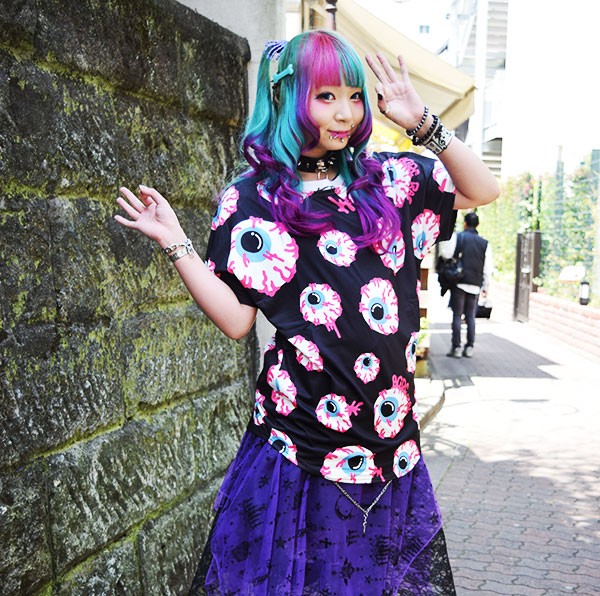Many practitioners of ever changing Japanese styles appear to revile the idea of women as weak or feeble and seek to project a sense of strength while preserving the school-girl façade, thereby divorcing themselves from the expectation to follow a traditional path that is imposed on them. This subversion is what is sought, the disparity between cute and cool both external and internal. This manipulation of motifs associated with youthfulness is slightly different from common mode of western fashion where the youth seek to project maturity, and older people seek to project youth. In the case of Japan, the focus for many is clear, only the interpretation changes.
This effect of social pressure contributing to the generation of distinctly Japanese fashion can be seen on a smaller scale with the popularity of the surgical mask as something to be worn daily.
Text: I love masks
Working or not, masks are necessary
I want to be beautiful woman with a mask forever
|
What would you think motivates someone to wear a surgical mask on the street? Many outside of Japan would assume that someone wearing a surgical mask was deathly ill.
While interviewing some Japanese friends, they expressed that their first impression of people wearing masks on the street is that they are probably doing so for the sake of fashion, not because of sickness. Japanese even has a specific word: 伊達マスク(affectation mask), to describe this phenomenon. Furthermore, the number of people wearing masks on the streets of Tokyo is quite surprising to someone who is unaccustomed to the culture. People in all walks of life and styles of dress wear masks, and they are omnipresent on Japanese streets.
The oft lamented pressure to conform sees a distinctly Japanese expression in the manifold distinctive styles expressed on Japanese streets. The subtle subversion of tranditional styles and conventions in order to avoid the pressure of societal norms is a tent pole of Japanese street fashion.



